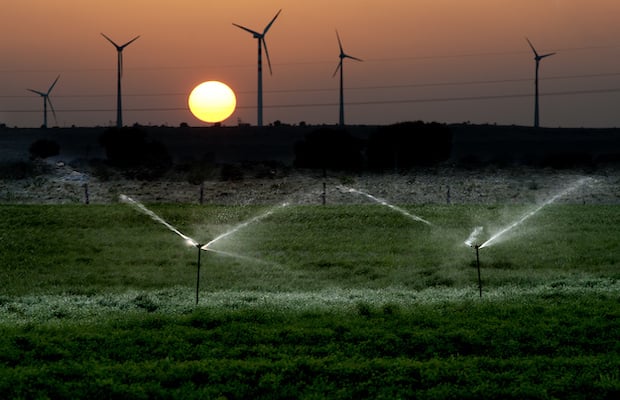

Google, ASM and HP Join Schneider Electric’s Program For Increased RE Access
According to a new report, wind energy capacity in India can only realistically reach 50 GW by 2022. And, efforts by the government to lower barriers around market design, grid infrastructure and land allocation must be intensified, in order to revive auction appetite and resolve the execution challenges facing India’s wind market and reach the country’s ambitious 175 GW renewable energy target by 2022, of which 60 GW is due to come from wind energy.
The report, “India Wind Outlook Towards 2022: Looking beyond the headwinds” by the Global Wind Energy Council (GWEC) and MEC+, highlighted the key challenges that must be overcome to restore strong wind market growth in India, including grid and land availability; off-taker risks; onerous tender conditions; and low tariff caps. Collectively, these challenges have led to the last three central wind tenders and all state wind tenders to be unsubscribed, re-tendered or even cancelled, while 80 percent of awarded projects have been delayed by 6-12 months.
The report details three scenarios for new wind installations in India until 2022, ranging from 11-17 GW of installations depending on the extent and speed with which the government and industry are able to resolve these challenges.
In 2020, supply chain disruptions due to the impact of the COVID-19 crisis will further compound existing challenges to delay around 0.7-1.1 GW in new volume to 2021 and also possible cancellation of some planned auctions.
India is the world’s fourth-largest onshore wind market by installations, with 37.5 GW of capacity as of 2019, and has the potential for more than 695 GW at 120 metres. Wind is already the second most competitive energy source on India’s grid today, and the government has set a target to reach a total wind capacity of 60 GW by 2022 and 140 GW by 2030. However, project installation has been decelerating recently, with only 2.3 GW installed in 2019, nearly half of the 4.1 GW installed in 2017. The report finds that even in the high case scenario, the country is likely to fall short of its ambitious wind energy target for 2022.
Ben Backwell, CEO at GWEC said “India has been one of the world’s largest wind energy markets for many years, and the government has put in place ambitious renewable energy targets in order to fulfil the country’s growing energy demand, which is set to double over the next ten years. While we applaud the leadership which the Indian government has shown, the targets alone are simply not enough to ensure the market grows at the right pace to reach its objectives. Setting realistic prices, a faster build-out of grid infrastructure, ensuring market liquidity and streamlining land allocation and site development will be crucial to revive auction appetite and accelerate the execution of India’s pipeline of wind energy projects.”
“Ultimately, India must overcome the challenges identified in the report not only to get its wind market growth back on track but also to provide new investment opportunities, jobs and affordable energy to contribute to the country’s economic recovery from the COVID-19 crisis” he added.
Source: saurenergy.com
In a significant move toward advancing green energy and industrial growth in the state, Himachal…
Golabl chemical conglomerate BASF has announced that its now offering the world’s first biomass-balanced polyethersulfone…
In a crucial stint to bolster the biogas sector and sustainable dairying in the country,…
TotalEnergies SE has received approval to proceed with its Middlebrook solar and battery project in…
Andhra Pradesh Chief Minister Chandrababu Naidu has inaugurated the Rs 1,000-crore green hydrogen plant of…
The BITS Pilani has developed an innovative solution for managing landfill leachate, domestic septage, and…